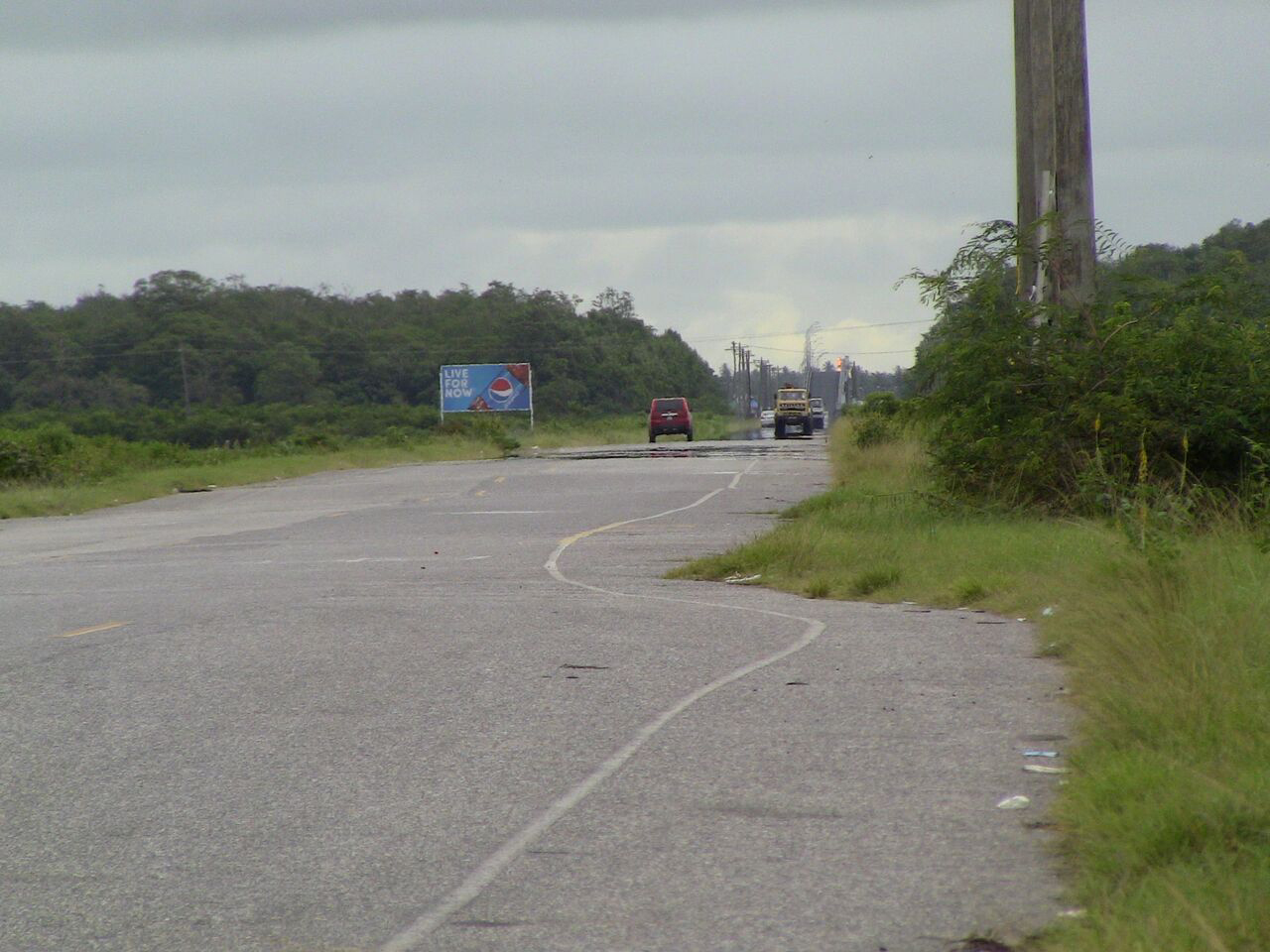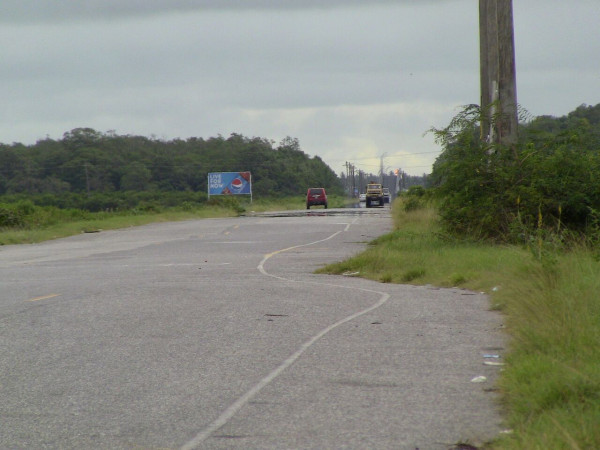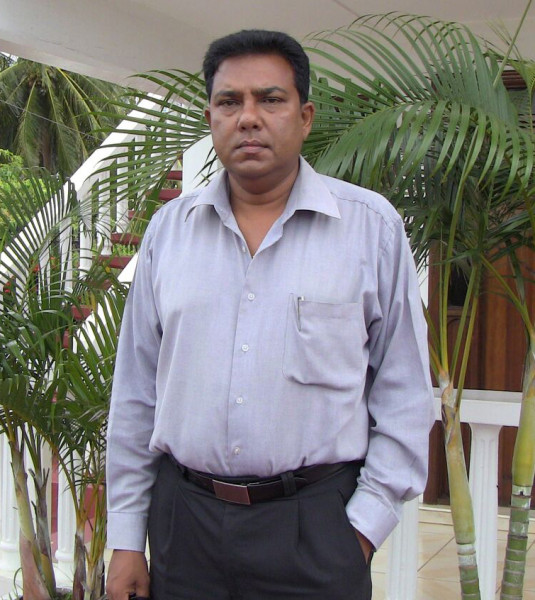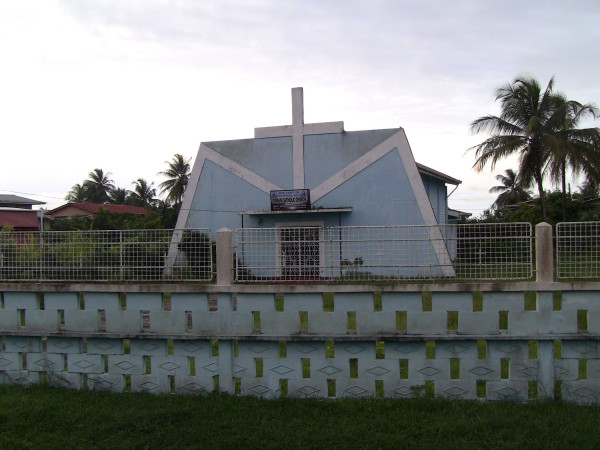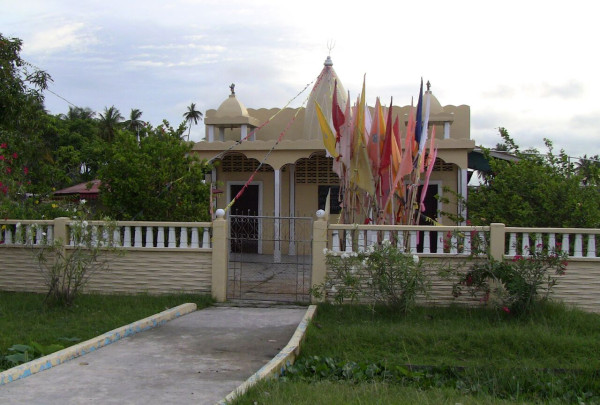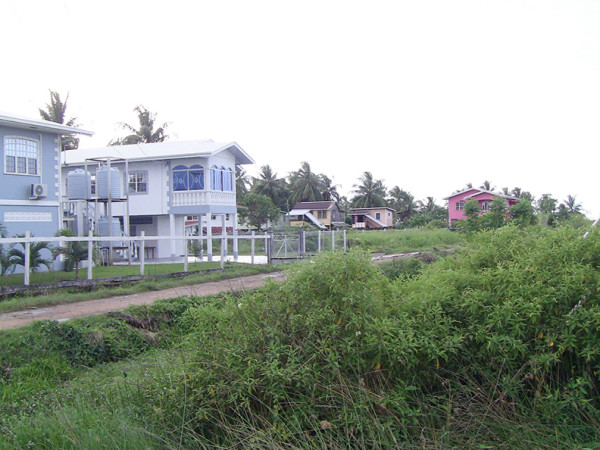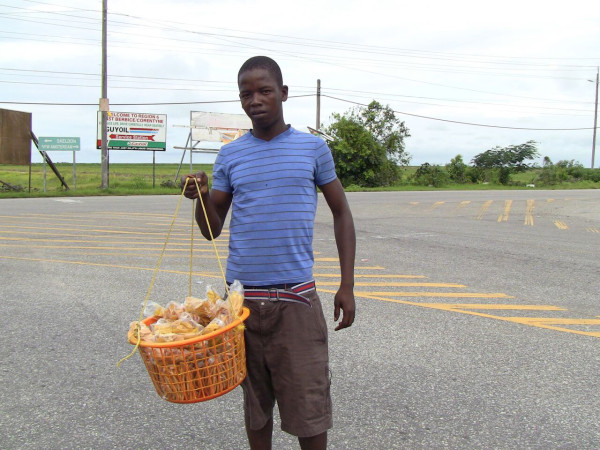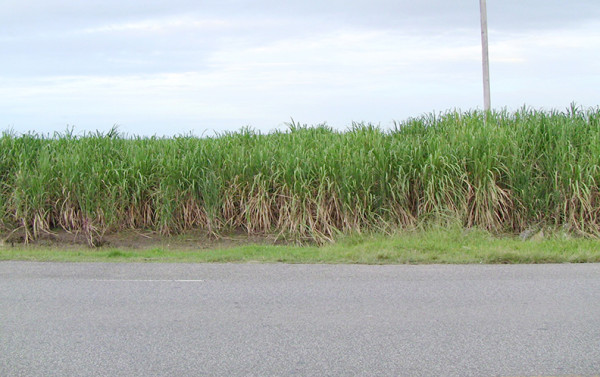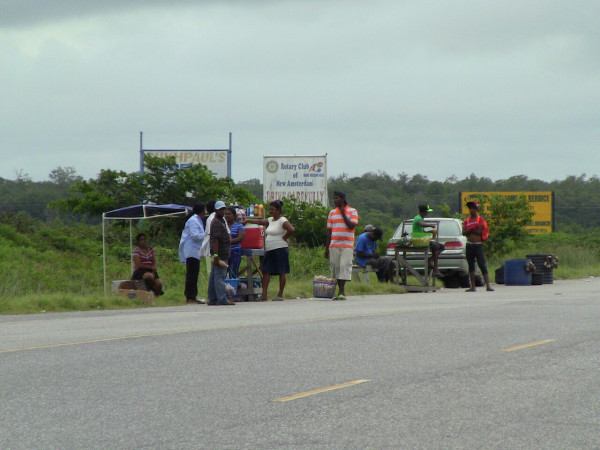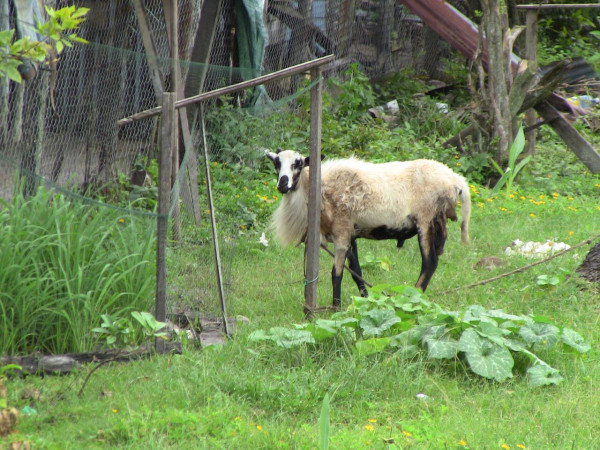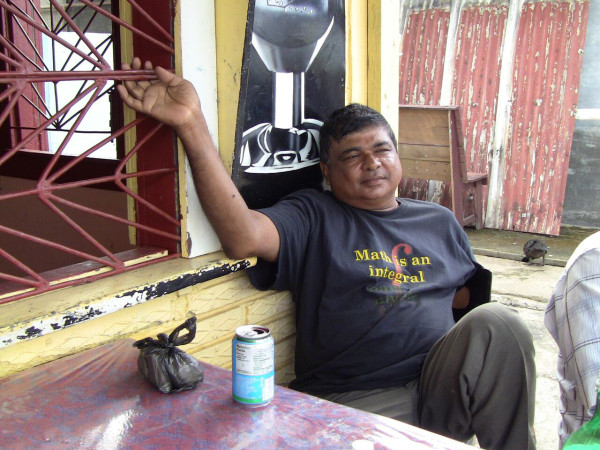Story and photos by Jannelle Williams
As The World Beyond Georgetown made its way to the Berbice Bridge access road which intersects the village, 19-year-old Darren Stuart was seen plying his trade, selling chips and other homemade snacks to passersby. Stuart who moved from Stanleytown to live with his cousin in Palmyra seven years ago, has been selling at the Berbice River Bridge since it opened. He too bemoaned the lack of economic activities, and what appears to be a downturn in the village’s economy. “Business going bad, sometimes when you come out you would get a good day, sometimes a bad day, but for the past couple of months business has been real slow,” he said. This is despite the fact that the bridge continues to receive “a lot of traffic coming both ways.” Regardless, Stuart feels the “village is very nice” and that nothing should be changed. As according to him, he and his friends “play cricket, swim and there is a pools table down the road so we does occupy ourselves; we not stressing, we young so life is as normal.”
Fifty-five-year-old Moniram Harricharran (Paul) is like the majority of the residents who live in Palmyra north: he was born and raised in the village. The World beyond Georgetown, was enlightened by Harricharran that the word ‘Palmyra’ is of Dutch origin and that when the village was established some “two hundred years ago houses been on both sides and were spaced out and the road was built from red sand and bricks.” He too stated the need for more development in the village. “The place is nice and quiet and for the longest while we don’t have any serious crime, but we need more businesses, and it was more populated in the past, so we want that now.”
Palmyra is home to farmers, teachers, mechanics, sugar workers and even a former magistrate.
Chandra Sohan the former magistrate, who recently returned to private practice, described the village of his birth as very peaceful, quiet and homely. “As you noticed we only have houses on one side of the road so it’s a tightly knitted group of families from the Palmyra turn to the Seawell turn.” Commenting on the small population, he said, “There has been a great deal of migration, so I would think the population is about 500.”
Sohan went on to reveal that the Palmyra as it is known today is as a result of a merger between two villages. “My grandfather has been in Palmyra since 1901 and according to him Palmyra comes out of two villages, one was Prasmyra and then we had Palmyra. Before the turn was Prasmyra.”
Reminiscing on his life as a youth in the village, Sohan revealed that, “In the afternoon we used to be in the backyard playing because there is a piece in the back by the rice fields which was a higher ground that we used to play cricket.” Smiling as the fond memories assailed him, the lawyer said, “This used to be a very bright neighbourhood. In my block all the houses had about five children so we had company and we used to play. All this area used to be very populated. At any one time, you would find about 20 children around the same age.” Regrettably, he stated, “Today, my children don’t have anyone to play with. They are alone. The place is not as populated.”
While noting that the village has changed over the years so much so that residents are now benefiting from electricity, running water, phones, and good drains; and there are better houses, Sohan said it “seems as if we have not been keeping Palmyra as nicely as it used to be.” He remarked, “The people before, the older people, they used to be more apt to cleanliness, keeping their drains clean, weeding their yards, chopping the bushes, and things like that.” Pointing to abandoned lands that have been allowed to be overrun with thick vegetation, Sohan said “Now if you walk around you will see bushes growing and people not bothering to weed their yards.”
A popular mechanic who has resided in the village since his family moved in when he was a little boy over 40 years ago begged to differ. Derek Samaroo beamed with pride as he declared Palmyra to be the best village in the country. “You see we don’t have any houses across from us, so we got a lot of breeze and the houses spaced out so we got yard space,” he said. “From the turn to Seawell turn, there is something embedded in minds of residents. We don’t wait on local authority, we clean our place; if a dog get knock down on the road and dead we pick it and dispose of it,” he stated.
Further, he does not see any problem with the fact that the village has no health centre, as according to him, “We are like just three miles from New Amsterdam – police station and hospital.” Referring to rumours that the government is looking into the possibility of converting cane fields in the village into house lots, Samaroo emphatically said, “We don’t want any neighbours across from us! When they gon ready to fight and sport and when their toilet gon flow over, since they land higher than we own it will cause problems for us.”
In addition to a few rum shops, a snackette, a mauby shop, two mechanic workshops, a spare parts shop, and an internet café, there are the Guyoil Gas Station, Bhagjai Distributors and Guyana Beverages Incorporated Berbice Branch which offer job opportunities for some villagers.
Most of the villagers are very laid back: the women sit and chat, the children play and the men are content to spend their afternoons enjoying a few drinks and cool breeze under the shade of coconut trees. The predominately Hindu community attends the mandir in the village, but there is also a church, Our Lady of Perpetual Help Roman Catholic church located there as well.
Initially, some six persons collectively owned the land comprising the entire village.
